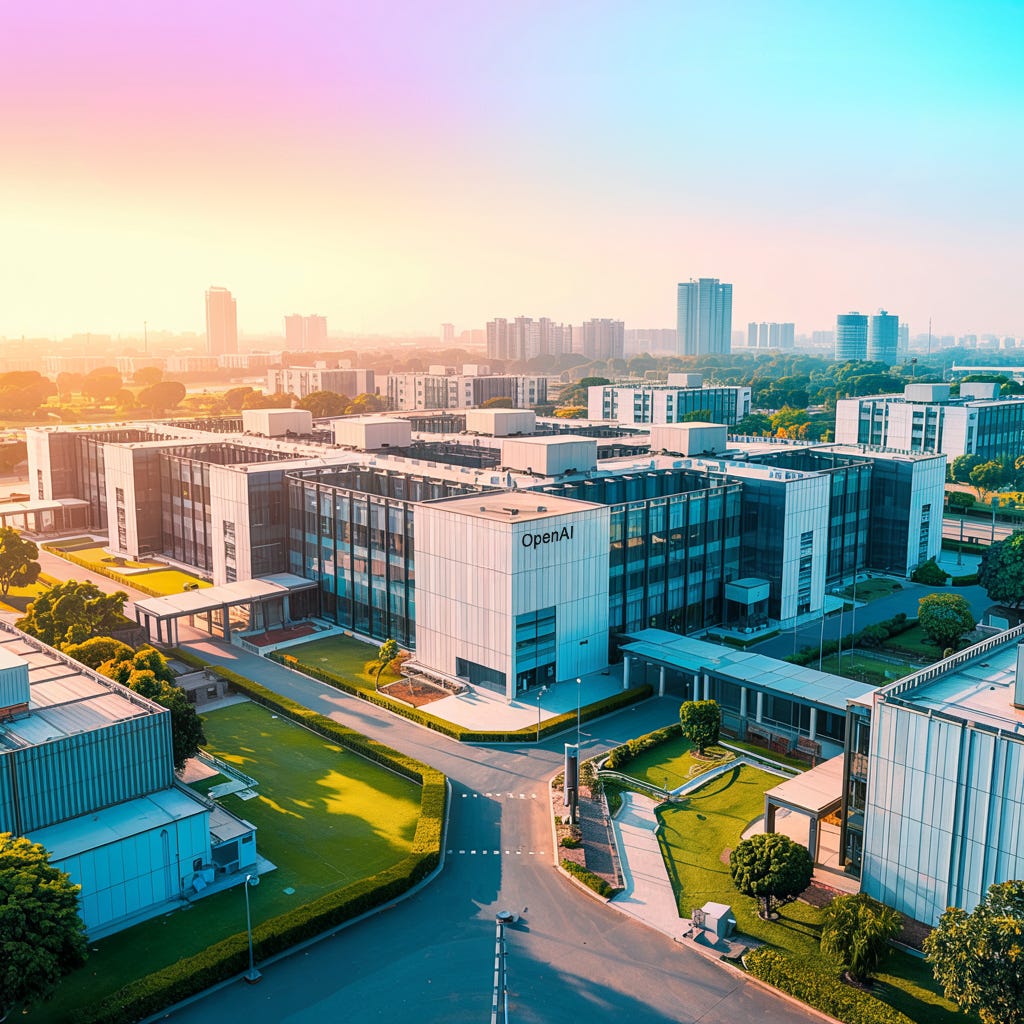Will OpenAI’s $500B Stargate and $1B India Data Center Rewrite the Balance of AI Power in Asia?
More than a data center, OpenAI’s India move is a referendum on whether emerging markets can anchor the next wave of AI infrastructure.
Welcome to Global Data Center Hub. Join investors, operators, and innovators reading to stay ahead of the latest trends in the data center sector in developed and emerging markets globally.
The news cycle exploded this week with reports that OpenAI is scouting partners for a 1-gigawatt (GW) data center in India. If built, it would rank among the largest AI facilities in the world.
But beneath the headlines, the story is about far more than one facility. It’s about India’s bid for AI sovereignty, the reshaping of global infrastructure alliances, and the raw physics of delivering a gigawatt of compute to a country racing toward digital dominance.
This isn’t just another hyperscaler leasing space. It’s a play that could rewire the balance of AI power across Asia.
Why India, Why Now
Three forces are colliding to make India the next node in OpenAI’s $500B Stargate initiative:
Market demand: India is OpenAI’s second-largest user base. ChatGPT usage quadrupled last year, with students and developers leading the surge.
Regulation: India’s Digital Personal Data Protection Act requires data localization foreign firms must keep Indian data in-country.
Government alignment: The $1.2B IndiaAI Mission directly supports local AI infrastructure and training. By anchoring a facility here, OpenAI aligns with Delhi’s push for digital sovereignty.
The result? India shifts from being a passive consumer of global AI to an active co-creator.
The Gigawatt Challenge
A 1GW facility is an order of magnitude larger than India’s biggest data centers today. For context:
Typical hyperscale = 20–100 MW
Largest existing Indian AI-ready facility ≈ 120 MW
OpenAI’s proposed site = 1,000 MW
That scale translates to tens of thousands of Nvidia B200 GPUs, each burning through 120 kilowatts in DGX racks. The problem: India’s grid is already stressed. A 1GW draw means building substations, new transmission lines, and firm power agreements just to keep the lights on.
On top of that, the water required for cooling could run into billions of liters annually. The political optics of such consumption will matter as much as the engineering.
Competitive Reality
OpenAI won’t be alone. The competitive landscape in India is ferocious:
Google: 1GW campus in Visakhapatnam ($6B capex, with $2B earmarked for renewables).
Reliance: Planning a 3GW AI-ready hub in Jamnagar, touted as a national digital backbone.
Microsoft: $3B already committed across three Indian regions, with a fourth underway.
For OpenAI, scale isn’t enough. To win, it must embed inside India’s national AI vision just as Google and Reliance already frame their builds as sovereign projects.
Beyond Steel and Silicon
This isn’t just an engineering project. It’s a multi-pillar strategy:
Infrastructure: The 1GW facility under Stargate.
Product localization: The India-only ChatGPT Go plan at $5/month.
Education: The OpenAI Academy India, in partnership with the IndiaAI Mission, giving half a million licenses to students and teachers.
Presence: A legal entity, a New Delhi HQ, and Sam Altman’s planned September visit to cement political goodwill.
Each pillar reinforces the others: the education push builds goodwill with regulators, the cheap subscription deepens user adoption, and the data center itself delivers the compute backbone to power it all.
The Geopolitical Stakes
Stargate isn’t just about serving customers. It’s about countering China’s AI sphere of influence and reinforcing alliances. India is already exempted from U.S. AI chip export restrictions that constrain the UAE. That tells us this facility is as much about Washington–Delhi strategy as it is about ChatGPT performance.
If realized, OpenAI’s 1GW build in India becomes more than a data center. It becomes a strategic foothold in the AI Cold War.
The Risks Few Are Talking About
Power availability: Can India really dedicate 1GW of uninterrupted supply to a single facility?
Water footprint: How will OpenAI navigate local opposition if water shortages intensify?
Execution risk: Land acquisition, state-level regulations, and fragmented incentives could stall progress.
Competitive framing: If rivals succeed in branding their campuses as “national projects,” OpenAI risks being painted as a foreign outsider.
Why This Matters for Investors, Operators, and Policymakers
Investors: The capex arms race in Asia is escalating. A gigawatt in India today may set the new global benchmark.
Operators: The technical lift required substations, PPAs, district cooling will reshape what’s possible in emerging markets.
Policymakers: Hosting OpenAI’s next flagship means navigating between opportunity (jobs, investment) and risk (energy and water use, sovereignty).
Final Takeaway
If India pulls this off, it won’t just host OpenAI’s largest facility outside the U.S. It will become a proving ground for whether emerging markets can anchor gigawatt-scale AI infrastructure.
That answer matters far beyond Delhi. Because if a 1GW data center can work in India amid grid strain, water scarcity, and regulatory complexity then the AI map shifts. Sovereign AI won’t just belong to the U.S. and China. It will belong to whoever can bend physics, politics, and policy into alignment.
And that may be the real legacy of Stargate.

